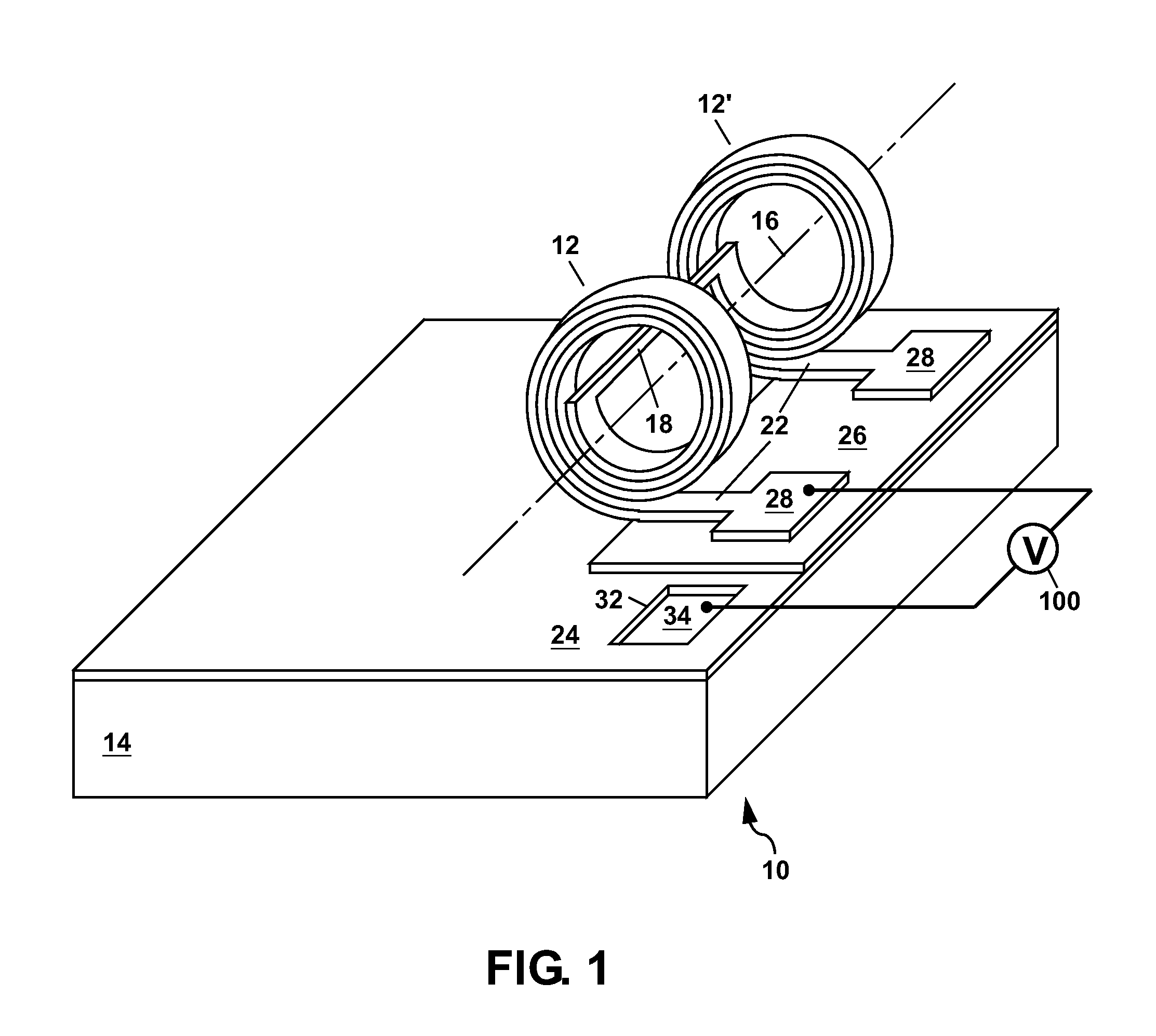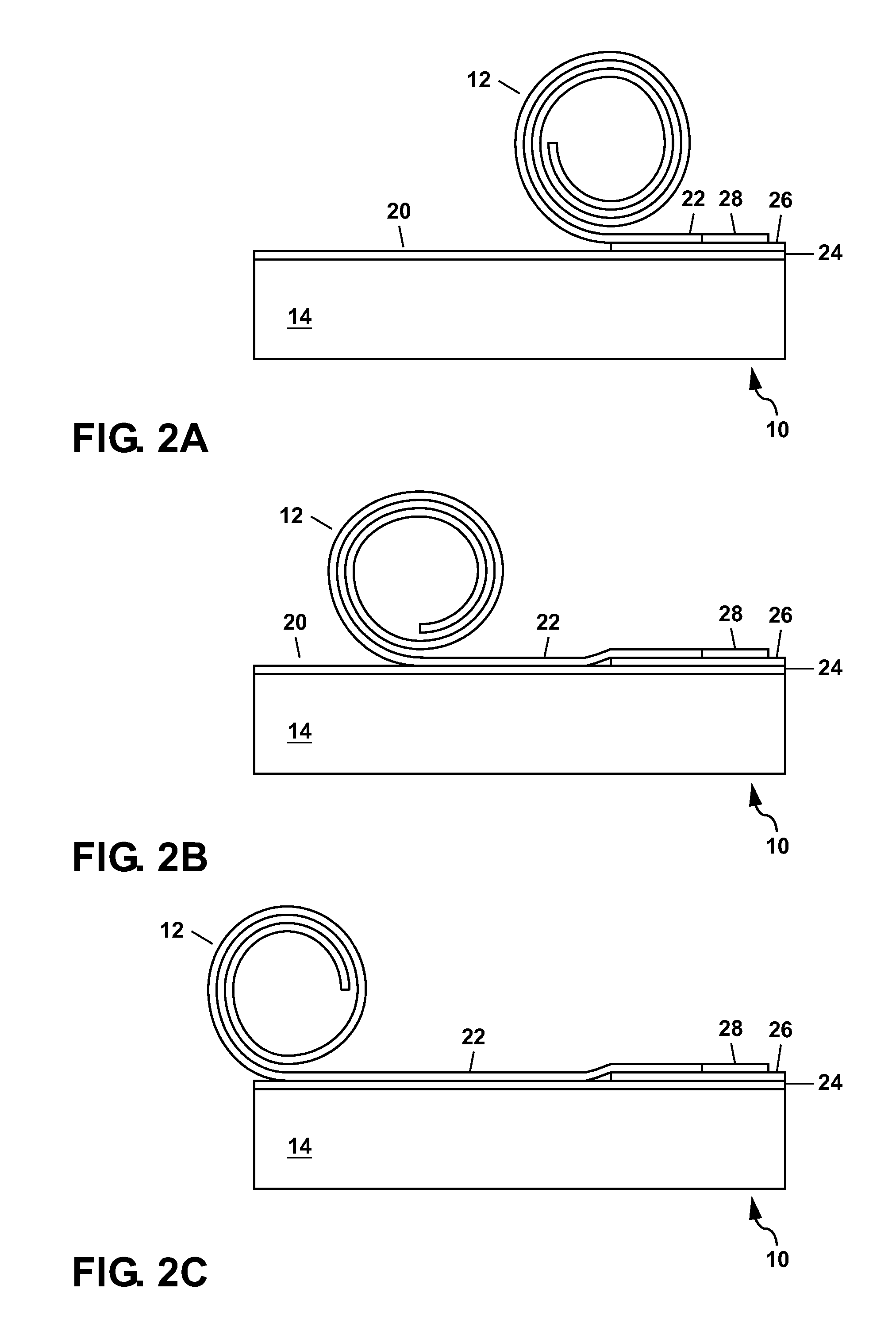Microelectromechanical tunable inductor
a micro-electromechanical and inductor technology, applied in the field of micro-electromechanical devices, can solve the problems of large losses, prohibitive size, and significant parasitic effects, and achieve the effect of reducing the ac resistance of the coil
- Summary
- Abstract
- Description
- Claims
- Application Information
AI Technical Summary
Benefits of technology
Problems solved by technology
Method used
Image
Examples
Embodiment Construction
[0032]FIG. 1 shows a schematic perspective view of a first example of a tunable inductor 10 according to the present invention. In FIG. 1, the tunable inductor 10 is a microelectromechanical (MEM) device which comprises a pair of coils 12 and 12′ that are of substantially the same size and arranged side by side on a supporting substrate 14. The coils 12 and 12′ are also oriented substantially parallel to each other and comprise a plurality of turns. Each coil 12 and 12′ is formed from an elongate member (see FIGS. 5A-5D) which coils up about a central axis 16 which is oriented substantially parallel to the substrate 14 as shown in FIG. 1. A first end of each coil 12 and 12′ is anchored to the substrate 14, and a second end of each coil 12 and 12′ is used to connect the pair of coils 12 and 12′ together via a bridge 18 which is suspended above the substrate 14. The second end is also referred to herein as an unanchored end.
[0033]A first electrode in this example of the present invent...
PUM
 Login to View More
Login to View More Abstract
Description
Claims
Application Information
 Login to View More
Login to View More - R&D
- Intellectual Property
- Life Sciences
- Materials
- Tech Scout
- Unparalleled Data Quality
- Higher Quality Content
- 60% Fewer Hallucinations
Browse by: Latest US Patents, China's latest patents, Technical Efficacy Thesaurus, Application Domain, Technology Topic, Popular Technical Reports.
© 2025 PatSnap. All rights reserved.Legal|Privacy policy|Modern Slavery Act Transparency Statement|Sitemap|About US| Contact US: help@patsnap.com



